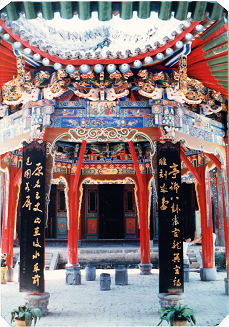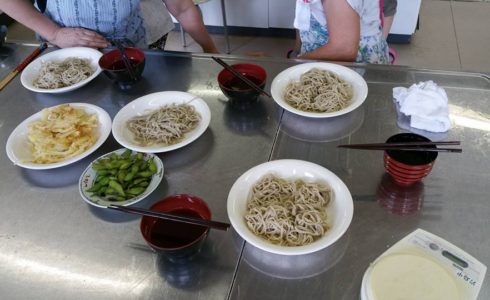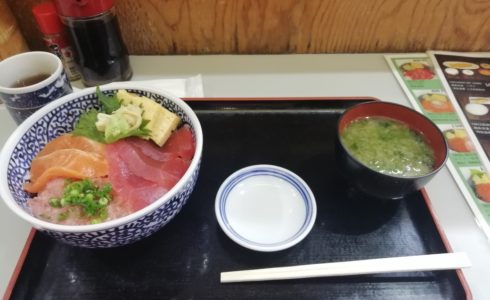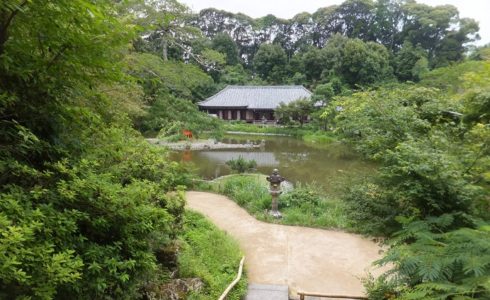
The Story of the Three Kingdoms
My profession is architectural design, and when I was a high school student, I wanted to be a researcher of literature. Literature and architecture are both aspects of culture that are passed on over a long period of time. Today, I would like to introduce you to some of these classic literatures. It is about a novel from the Ming Dynasty in China The Story of the Three Kingdoms, which is very popular in Japan.
What makes the story so interesting is that it is similar to the Trojan War described in the ancient Greek poem The Iliad, with many characters and vivid descriptions of their personalities. Also, the Story of the Three Kingdoms is about a war that was fought on water and on land on a scale and over a period of time that surpassed even that Punic War.
The Story of the Three Kingdoms are also based on historical facts and the historical books of this period exist separately from the novels. It is an entertaining piece of theatre, so some of the characters and events are slightly exaggerated from the facts in the historical books. My father wrote an essay based on the history book on which the novel is based, which I would like to share with you.
First of all, I would like to talk about the geography of China. China has two great rivers, like the Nile in Egypt. The Yellow River is to the north and the Cháng jiāng River to the south, both flowing from west to east. The characters in “The Three Kingdoms” are divided into three regional powers: Wèi, Wú and Shǔ. Wèi ‘s capital was Luò yáng on the Yellow River, Wú ‘s capital was Nā jīng on the lower reaches of the Cháng jiāng River and Shǔ’s capital was Chéng dōu on the upper reaches of the Cháng jiāng River.
The story describes the period when the Hàn dynasty, which began in 206 BC and was destroyed in 220, lost its power and civil war broke out.
The main characters in this story are a man called Liú Bèi, the founder of Shǔ, and his two friends. They are honest and don’t like corrupt officials, but they are not good at political games. On the other hand, Liú Bèi ‘s choice for military strategist and politician was a man of high conceptual and practical ability. This man, Zhū gé Kǒng míng, is one of the most respected men of later times.
The history books say that Zhū gé Kǒng míng was a competent and well-liked man who became the Minister of Shǔ and developed the country’s strength by developing agriculture and enforcing the laws fairly. It is said that the reason for Zhū gé Kǒng míng ‘s popularity was that, despite his genius, he had a completely unselfish character. Later, Dù Fǔ, one of the most famous poets of the Tang Dynasty, visited the mausoleum dedicated to Zhū gé Kǒng míng and wrote a poem about him. In Japan, a poet called Doi Bansui wrote a poem about Zhū gé Kǒng míng ‘s achievements and regrets that he died before his vision was fulfilled(in 1899). In the novels, Zhū gé Kǒng míng is also described as a military genius. However, due to the mismanagement of the leaders of Shǔ (Liú Bèi and his friends) and the lack of human resources, Shǔ was not able to unite the country in spite of the good works of Zhū gé Kǒng míng.
On the other hand, Cáo Cāo, who is the founder of Wèi and is described as the evil villain of the Story, was a clever, daring and capable man who used his human resources well. Cáo Cāo also had a very cruel side and many brutal episodes have been described. During his battles with lords and princes in various provinces, Cáo Cāo carried out unnecessary massacres. In addition to that, he killed the wife and family of the Han emperor who had attempted a coup d’état.
Also, when Cáo Cāo decided that someone might become his enemy, he did not hesitate to kill him. For example, when Cáo Cāo passed by the house of a friend of his father, he asked the friend if he could visit and stay with him. So, His father’s friend gladly welcomed Cáo Cāo into his house. However, while the friend was out shopping to entertain him, Cáo Cāo mistakenly killed his friend’s entire family. (This was because he overheard a conversation about how to kill a domestic pig and thought they were going to kill him.) Cáo Cāo ran away from the house, and when his father’s friend came back, Cáo Cāo killed him too. Cáo Cāo explained to his companion that it was better to kill them all so that he would not get revenge on them, but the man who accompanied Cáo Cāo were surprised and decided that he could not follow Cáo Cāo and left when the time was right. Although Cáo Cāo was a man of such a brutal nature, he continued to win wars and became a hero in turbulent times. If Niccolò Machiavelli had been acquainted with Cáo Cāo, he would have praised Cáo Cāo as an ideal statesman in his book The Prince.
Sūn Quán, the leader of the third kingdom, Wú, took over the role of leader after his older brother, a man of great military ability, was killed by the enemy when he thoughtlessly goes hunting in secret.
The Story of the Three Kingdoms is a long novel, telling the story of the generations of Liú Bèi , Cáo Cāo, Sūn Quán and Zhū gé Kǒng míng, and their children. One of its most famous episodes is the Battle of Red Cliff. The Battle of the Red Cliff, fought by the combined forces of Sūn Quán and Zhū gé Kǒng míng against Cáo Cāo was even made into a Hollywood movie. The Battle took place in 208.
How did the Three Kingdoms period end? There was a talented politician named Sī Mǎ Yì who served Cáo Cāo and his son. Finally, Sī Mǎ Yì ‘s grandson replaced Cáo Cāo ‘s family in power. Shǔ was destroyed by Wèi in 263 and Wú was destroyed by Wèi in 280. As a result of these events, Sī Mǎ Yì ‘s grandson unified China in 280.
The oldest known publication of The Story of the Three Kingdoms was published in 1522. This is relatively close to the time when Shakespeare created his plays.
The Story of the Three Kingdoms was first translated into Japanese during the Edo period (1603-1868) and has since been enjoyed in a variety of forms, including novels, manga, puppet shows and games. I like the film The Story of the Three Kingdoms shown as a Japanese puppet theatre show. The puppets are very well made because of the culture of ningyo joruri(puppet theater) in the Edo period.
An episode from the early days of The Story of the Three Kingdoms, performed by a puppet theatre
This video shows an episode from the early days of The Story of the Three Kingdoms, performed by a puppet theatre. It tells the story of a dictator who is assassinated by a commander who has taken him in as his adopted son. A beautiful woman is playing a role in bringing these two powerful men to an end. In the final scene, the young Cáo Cāo invites Liú Bèi to join him. Even though it is performed by puppets, the psychological description of the characters is excellent and wonderful.
The photo at the beginning of this blog is the mausoleum dedicated to Zhū gé Kǒng míng, which stands on the spot where he died in the middle of a battle.






